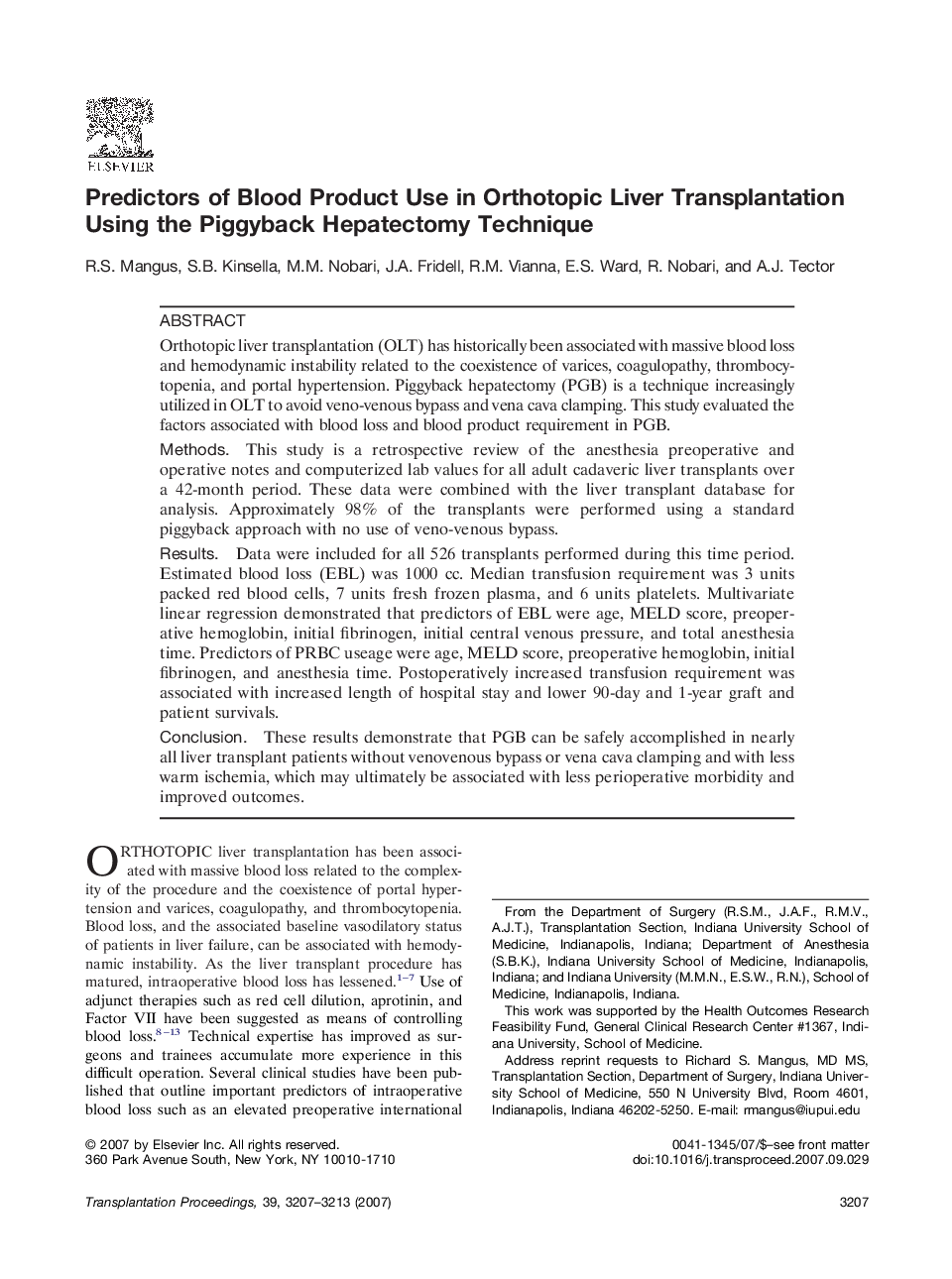| Article ID | Journal | Published Year | Pages | File Type |
|---|---|---|---|---|
| 4262757 | Transplantation Proceedings | 2007 | 7 Pages |
Orthotopic liver transplantation (OLT) has historically been associated with massive blood loss and hemodynamic instability related to the coexistence of varices, coagulopathy, thrombocytopenia, and portal hypertension. Piggyback hepatectomy (PGB) is a technique increasingly utilized in OLT to avoid veno-venous bypass and vena cava clamping. This study evaluated the factors associated with blood loss and blood product requirement in PGB.MethodsThis study is a retrospective review of the anesthesia preoperative and operative notes and computerized lab values for all adult cadaveric liver transplants over a 42-month period. These data were combined with the liver transplant database for analysis. Approximately 98% of the transplants were performed using a standard piggyback approach with no use of veno-venous bypass.ResultsData were included for all 526 transplants performed during this time period. Estimated blood loss (EBL) was 1000 cc. Median transfusion requirement was 3 units packed red blood cells, 7 units fresh frozen plasma, and 6 units platelets. Multivariate linear regression demonstrated that predictors of EBL were age, MELD score, preoperative hemoglobin, initial fibrinogen, initial central venous pressure, and total anesthesia time. Predictors of PRBC useage were age, MELD score, preoperative hemoglobin, initial fibrinogen, and anesthesia time. Postoperatively increased transfusion requirement was associated with increased length of hospital stay and lower 90-day and 1-year graft and patient survivals.ConclusionThese results demonstrate that PGB can be safely accomplished in nearly all liver transplant patients without venovenous bypass or vena cava clamping and with less warm ischemia, which may ultimately be associated with less perioperative morbidity and improved outcomes.
